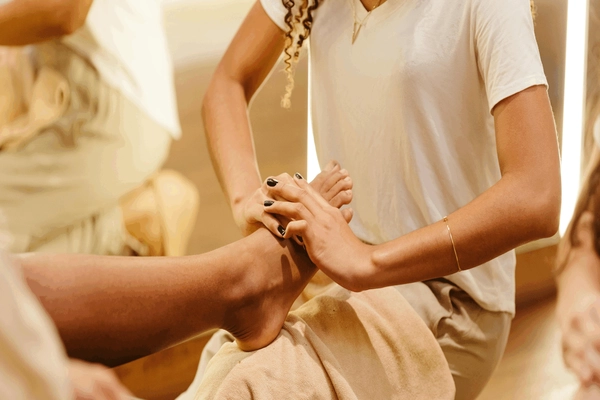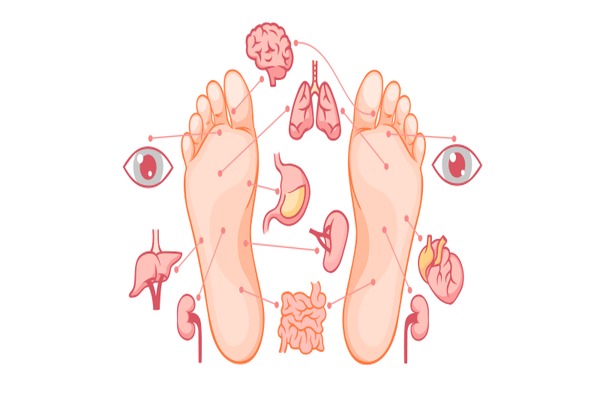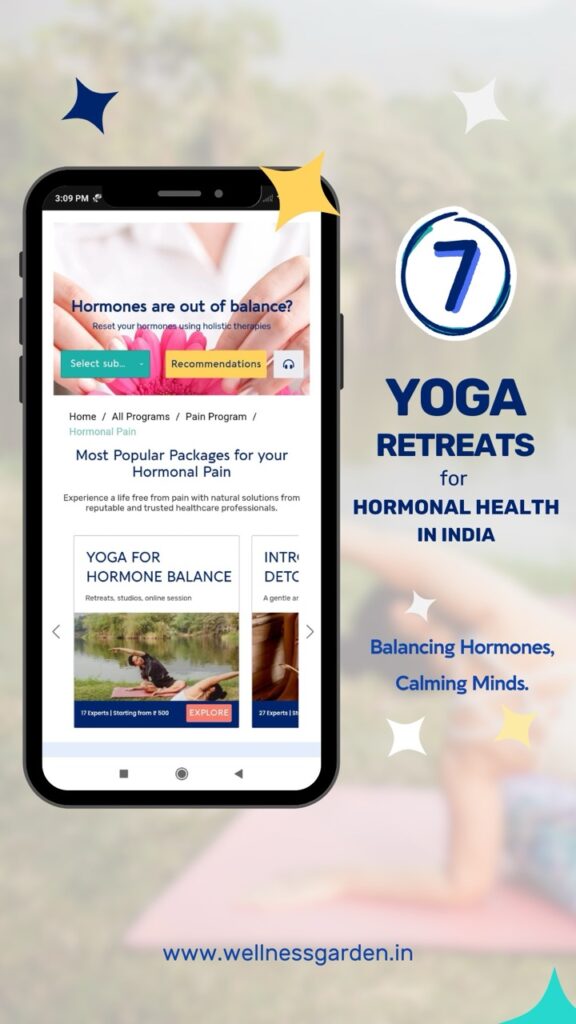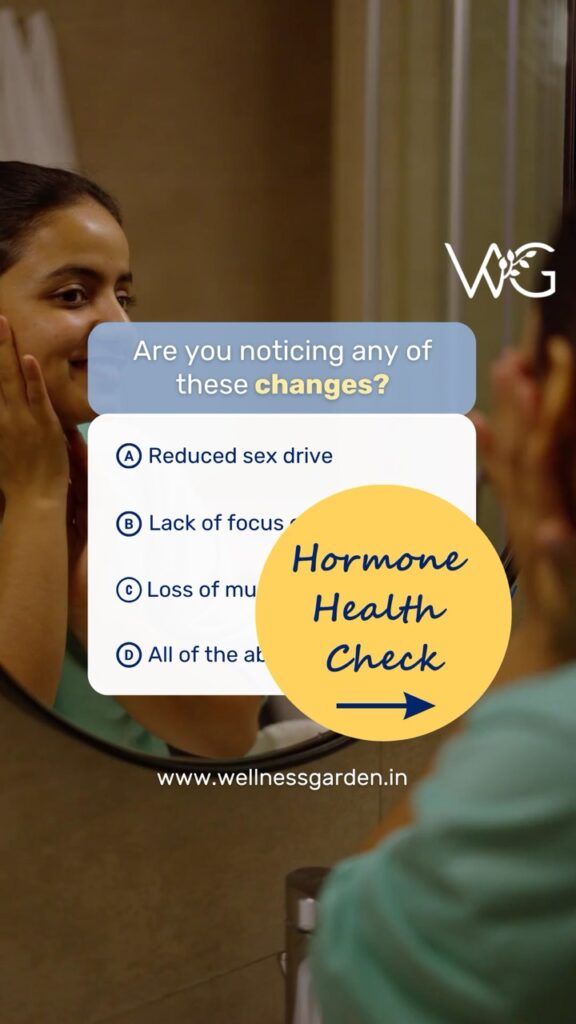Reflexology Foot Massage: Healing with a Feeling
- Specialties & Therapies
- 3 mins
- February 28, 2023
- NCCIH
- Naturopathy, Treatment on the Body
Reflexology is a therapeutic practice that involves applying varying degrees of pressure to specific points on the feet, hands, and ears. Originating over 4,000 years ago in China, it’s a gentle and non-invasive complementary therapy( reflexology foot massage ) believed to be connected to certain organs and body systems.
Practitioners, known as reflexologists, aim to promote relaxation, rejuvenation, and overall well-being by stimulating these reflex areas.

What is Reflexology?
Time and again, stress or pain is experienced mostly by one and all, right from the moment of waking up to the time of hitting the bed. This could be due to various reasons such as depression, anxiety, wayward lifestyle, ailment, or an injury. This ever-increasing pain or stress adversely affects our performance at work, which in turn also impacts our home life making us increasingly tired physically and mentally. The age-old quote that ‘Health is Wealth’ is an important aspect to be worked upon with the fast-paced lifestyle led by us all. One way to relax, de-stress, detox, and strengthen our immune system under such stressed circumstances is through the healing art of Reflexology.
Reflexology is a type of massage that involves applying different amounts of pressure to the feet, hands, and ears. It is based on the theory that these body parts are connected to certain organs and body systems. People who practice this technique are called reflexologists. According to the National Center for Complementary and Integrative Health (NCCIH), reflexology is a type of massage therapy that concentrates on pressure points on the hands and feet, intending to help ease a variety of health conditions, including pain, sleep disorders, and anxiety.
It is an ‘ancient refined science’ developed in China more than 4000 years ago and practiced across the world as a gentle, non-invasive complementary therapy that works on the reflex areas of the feet, hands, and spine to help people to Relax, Rejuvenate, Refresh and Re-energize.
Principles of Reflexology
Several clinical studies have revealed the incredible benefits of a power nap of 15 to 20 minutes or more in restoring alertness, performance, and learning ability of a person under stress. Similar to a power nap, a reflexology therapy session lasts anywhere between 15 minutes to 1 hour where you receive the therapeutic touch of a trained reflexologist, who practically uses the healing power of his hands to put the receiver to sleep, in an enlightened state of surrender.
Due to the many advantages of reflexology foot massage, such as it being a clothes-on therapy where you may need to remove only your socks and shoes, and can spring back to work all charged up after the therapy session, it can be the best solution for reducing stress at the workplace.
Reflexology foot massage can help reduce the build-up of lactic acid in the muscles by up to 4x faster, thereby improving blood circulation and building a stronger immune system. This could make reflexology the new go-to treatment for the corporation to help provide the muscle pain relief felt from the stress of being physically still and mentally super-alert.
How it works?
While most people think that reflexology is just another word for reflexology foot massage, it is much more than that. What exactly is reflexology and what does it do?
Beyond the feel-good effects of the treatment, the practice and purpose go deeper than the skin and muscles by taking specific reflex points on the foot to induce a healing response in corresponding organs and areas of the body, as seen in the chart. Kneading the soft fleshy ball of the foot, pulling on the toes, tracing around the heel, and pushing deep into the arch are just a few of the many small, intense movements one will experience during a reflexology treatment.
Treatment using Reflexology
Reflexology therapy helps address anything from headaches to sinus problems to stomach issues, if sensitivity or tenderness is experienced when certain areas of the foot are stimulated, it usually indicates bodily weaknesses or imbalances within the corresponding organ. With repeated practice of applying pressure and manipulating nerve endings (traditionally in the foot), reflexology can help to clear any channels of blocked energy by moving the flow of blood, nutrients, and nerve impulses to ultimately improve overall health and balance. In addition to manipulating the pressure points on the foot, reflexologists sometimes work on the hands or ears to trigger relaxation as well.
Benefits of Reflexology Therapy
A professional reflexology therapy session for the feet or back has immense benefits in tackling the underlying causes of stress and not simply the symptoms. Here are the top 7 benefits of this ancient therapy, showing how it supports different body parts and health conditions:

1. Improves Circulation for Overall Vitality
Enhances blood flow to the feet and beyond, helping reduce swelling and promote faster healing in affected areas.
2. Reduces Stress and Tension to Ease Anxiety and Muscle Pain
Calms the nervous system, lowering cortisol levels and relieving headaches, neck, and back pain caused by stress.
3. Boosts Immune Function to Fight Illness
Stimulates lymphatic drainage and white blood cell activity, helping the body defend against infections and recover faster.
4. Promotes Detoxification by Supporting Lymphatic Health
Encourages toxin removal through improved lymph flow, which aids kidney and liver function.
5. Supports Organ Health by Targeting Reflex Points
Direct pressure on foot zones linked to organs like the liver, lungs, and kidneys can improve their performance and alleviate related symptoms.
6. Balances Energy Flow to Restore Body Harmony
Corrects blockages in the body’s energy pathways, reducing fatigue and improving sleep quality.
7. Elevates Mood and Energy by Stimulating Relaxation Reflexes
Triggers release of endorphins and serotonin, lifting mood and increasing overall energy levels.
The Reflexology sessions help stimulate or energize 7,200 nerve endings, 19 muscles, 107 ligaments, and 26 bones in each foot.
Side effects of Reflexology foot massage
Although minimum, there are a few side effects that you can watch out for while undergoing reflexology foot massage therapy, such as:
- Cold or flu-like symptoms may follow the therapy.
- Some people may develop headaches and feel tired after the session.
- People may experience different reactions after therapy. Some may feel happy and laugh while some may feel like crying.
- You may experience tenderness and increased sensitivity during the session.
- Some other side effects may be nausea, excessive sweating, insatiable thirst, and skin rashes.
It is often said,“The Feet Tell It All”. The tenderness of the reflex points felt by the therapist in the client’s feet can pinpoint which organ or body part needs special attention. Take the help of a professional to get an accurate analysis of the trouble areas.
What to expect
To be effective, a reflexology practitioner must be certified and understand the meridians related to each pressure point. Most spas offer reflexology, and the treatment typically lasts approximately 30 minutes. It is important to have a conversation with your reflexologist beforehand to discuss your issues, whether it is constipation, a tension headache, or trouble sleeping.
During a reflexology session, you are clothed and seated or lying down while the therapist rubs, presses on, and squeezes points on your feet. The therapist may concentrate on specific areas to alleviate ailments (if you have sinus trouble, the therapist will focus on your toes) or work on the whole foot to strengthen every system in the body.
Things to Remember
- Wait at least 1-hour post eating to get a massage.
- Do not receive reflexology if you are pregnant.
- Drink water following the treatment to eliminate toxins and lactic acid build-up that occurs during the massage.
- Consult a doctor first if you have foot problems, an injury, or a blood vessel disease associated with clots or varicose veins.
If you’re interested in practicing the aforementioned Reflexology foot massage session under our guidance, feel free to get in touch with us for personalized Reflexology Consultations and more.
Your Trusted Partner for Personalized Holistic Wellness
Reflexology experts at Wellness Garden focus on applying pressure to specific points on the feet, hands, and ears to promote overall health and relieve stress. We connect you to over 600 certified professionals across India, including major cities like Mumbai, Delhi, Bangalore, and Kerala.
Our holistic approach integrates natural therapies that nurture your body, mind, and environment—covering nutrition, mindfulness, reflexology, and more. From managing physical discomfort to enhancing mental well-being, our experts offer personalized sessions both online and offline, tailored specifically to your unique health needs.
Discover trusted guidance and effective therapies designed to restore balance and promote lasting wellness. Begin your journey with Wellness Garden today.
FQAs
1. Is reflexology foot massage safe for everyone?
Generally yes, but people with foot injuries, infections, or certain medical conditions should consult a healthcare provider before treatment.
2. How long does a typical reflexology session last?
Sessions usually last between 30 to 60 minutes, depending on individual needs.
3. How often should I get reflexology treatments?
Frequency varies, but many start with weekly sessions, then reduce to maintenance visits as benefits build.
4. Can reflexology help with chronic pain or specific health issues?
Yes, reflexology can complement other treatments to help manage chronic pain, anxiety, headaches, and digestive problems.
5. Do I need to remove footwear during a reflexology session?
Yes, reflexology is performed barefoot or with socks removed to access specific foot points accurately.
- Table of Contents
- • Introduction to Reflexology
- • How it works
- • What to expect
- • A Word From WG
Recent Posts
Join Our Newsletter
End note from WG Team
WG Team
Disclaimer: This information is provided for educational purposes and should not be construed as medical advice. Please consult with healthcare practitioners before undertaking any changes in wellness routines or adding new therapies.
Latest Blogs
Check out some of your blogs related to your interest.
- November 29, 2025
- Dr. Deepak Chopra
- 3 Mins
- September 18, 2025
- Dr. Piyush Jain
- 2 Mins
- September 12, 2025
- Dr. A. Shaji Bharath
- 2 Mins
- September 10, 2025
- NIH
- 4 Mins





